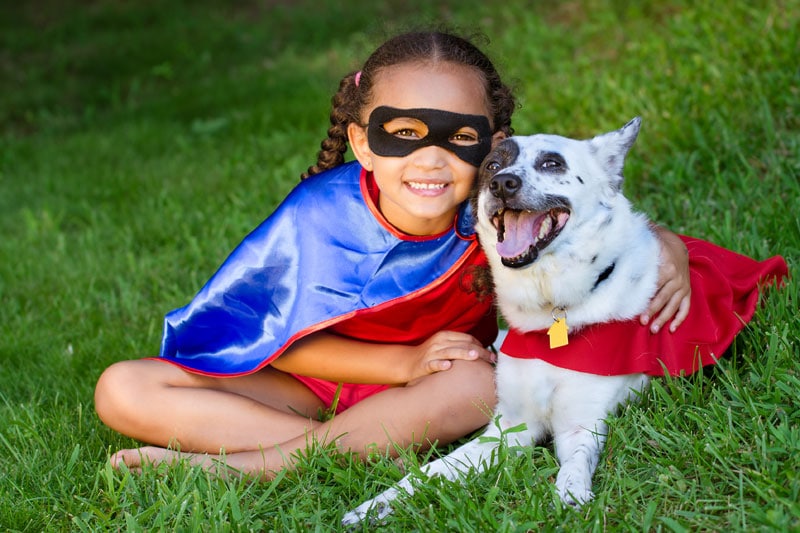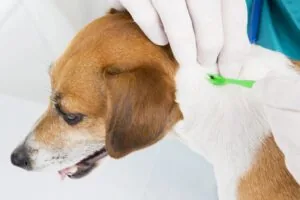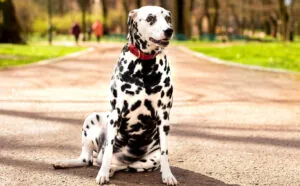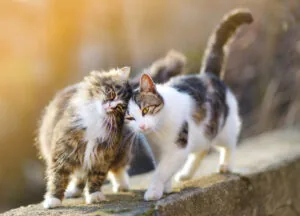Halloween Pet Safety

It’s Halloween season. Even if you’re grown-up, you probably get a happy little tingle from this haunting holiday, but pets often find it truly scary. At its core, Halloween is all about thrills and chills—but when it comes to pet safety, we prefer to keep things horror-free. Read on for everything you’ll need to know about Halloween pet safety.
Trick-or-treat Candies Are Not for Pets
Several popular Halloween treats are toxic to pets. Chocolate in all forms—especially dark or baking chocolate—can be very dangerous for cats and dogs, and sugar-free candies containing the sugar substitute xylitol can cause serious problems in pets. Symptoms of chocolate poisoning may include vomiting, diarrhea, rapid breathing, increased heart rate, and seizures. Halloween candies containing the artificial sweetener xylitol can also be poisonous to dogs. Even small amounts of xylitol can cause a sudden drop in blood sugar and the subsequent loss of coordination and seizures. If you suspect your pet has ingested something toxic, please call your veterinarian or the ASPCA Poison Control Center at (888) 426-4435 immediately. Keep treats away from your children unless you are observing them. Children may make the harmful mistake of sharing with their four-legged friends.
Leave Pets Inside/Comfortable
Give your pets a haven where they can feel safe, comfortable, and relaxed—tucked away from any Halloween hazards.
Keep pets confined and away from the door. Indoors is certainly better than outdoors on Halloween, but your door will be constantly opening and closing, and strangers will be on your doorstep dressed in unusual costumes. This, of course, can be scary for our furry friends, which can result in escape attempts or unexpected aggression. Putting your dog or cat in a secure crate or room away from the front door will reduce stress and prevent them from darting outside into the night.
Before the trick-or-treating starts, put your pets in a quiet room where they will be safe from all the Halloween activity. Even if you are just having friends over for a Halloween party, keep your pets away from the festivities in their safe room. Masks and costumes change how people look and smell to a pet, so even familiar people may become frightening. When going out trick-or-treating, leave your dog at home. Dogs can be easily excited by the Halloween commotion, and a bite or a lost dog will quickly end the evening’s fun.
Halloween Decorations
While glow sticks can help keep people safe on Halloween night, they can add some unwanted drama to the holiday if a pet chews one open. Pets who get into a glow stick may drool, paw at their mouth, become agitated, and sometimes even vomit.
Keep Halloween plants such as pumpkins and corn out of reach. While small amounts of corn and pumpkin can be fed safely to many pets, ingesting uncooked, potentially moldy Halloween pumpkins or corn displays can cause big problems. Gastrointestinal upset is a possibility whenever pets eat something they aren’t used to, and intestinal blockage can occur if large pieces are swallowed.
Don’t keep lit pumpkins around pets. If you are using candles to light your jack-o-lanterns or other Halloween decorations, make sure to place them well out of reach of your pets. Should they get too close, they run the risk of burning themselves or causing a fire.
Keep electric and battery-powered Halloween decorations out of reach. Electric and battery-powered Halloween decorations are certainly safer than open candles, but they still can present a risk to pets. Pets who chew on electrical cords can receive a possibly life-threatening electrical shock or burn.
Costumes
For some pets, wearing a costume may cause undue stress. Don’t put your dog or cat in a costume unless you know he or she loves it. If you do dress up your pet for Halloween, make sure the costume does not limit his or her movement, sight or ability to breathe, bark or meow. Check the costume carefully for small, dangling or easily chewed-off pieces that could present a choking hazard. Ill-fitting outfits can get twisted on external objects or your pet, leading to injury. Be sure to have your pet try on the costume before the big night. If he or she seems distressed or shows abnormal behavior, consider that a costume might not be right for your pet. Remove any chewable parts or objects that could come off and choke your pet. An estimated half of pet owners dress their pets in costumes for Halloween. Pumpkins and ladybugs are the perennial favorites.
Microchip
If your dog or cat should escape and become lost, having the proper identification will increase the chances that he or she will be returned. Collars and tags are ideal if a Good Samaritan is able to collect your wayward pet, but microchips offer permanent identification should the collar or tag fall off. Just make sure the information is up-to-date. Use Halloween as a yearly reminder to double check your address and phone number on tags and with the company who supports pet microchips.
We know your pet’s safety is always a priority, which is why our experts have provided these Halloween pet safety tips, in addition to an array of other tips to keep your dogs and cats healthy.
Share This Post
Recent Posts
About Shallowford Animal Hospital
Shallowford Animal Hospital and The Pet Spa at Shallowford are dedicated to the exceptional, compassionate care your pet deserves. Pets hold a very special place in our families, and we treat yours like our own.



